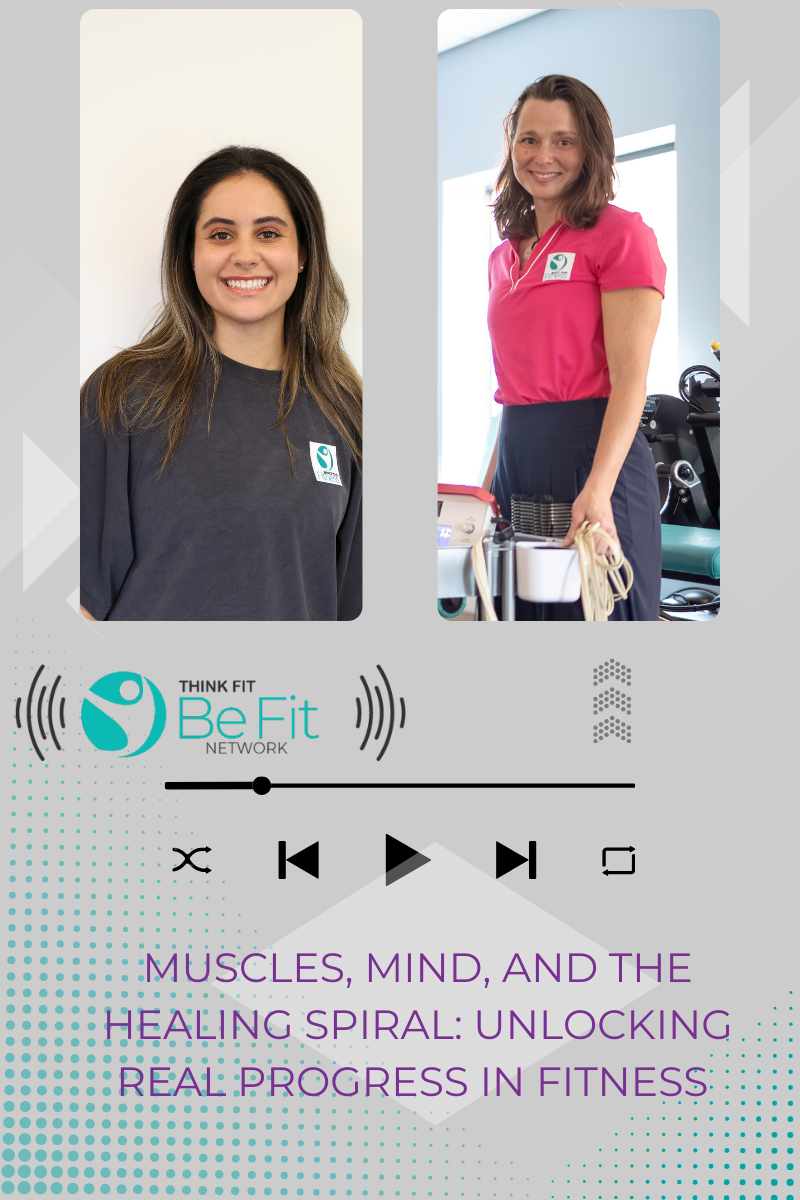%20(1).jpg)
Nervous System Healing: The Secret Ingredient in Your Fitness Journey
This week, Jenn and Sofia tackled a topic that doesn’t get enough airtime: the nervous system’s role in healing, growth, and reaching your fitness goals. Think of the nervous system as your body’s master switchboard, controlling not just your muscles, but also your pain, stress, and ability to recover.
Building muscle and bouncing back from injury isn’t just about gym time—it’s about how well your nervous system communicates with your body. Jenn highlights six types of communication the nervous system uses while healing. Tuning into these is the ultimate fitness hack.
Why the Nervous System Matters
Most of us live in “fight or flight” mode—great for emergencies, but not for recovery or long-term health. Chronic stress disrupts blood and lymph flow, tightens muscles, and messes with sleep. At Impact Your Fitness, we focus on bringing people back to a window of tolerance—that calm, safe zone where you can actually grow.
The Six Ways Your Nervous System Communicates During Healing
1. Limbic Looping
This is when your emotional brain keeps replaying stress, even if the threat is gone. In the gym, it can mean holding onto tension or pain from old injuries. The first step is noticing the pattern, then breaking the loop with breath-work, movement, or support.
2. Interoception
Tune into what’s happening inside—are you tense, relaxed, or anxious? Interoception rebuilds trust with your body and helps you self-regulate, avoid injury, and know when to push or rest.
Sofia shares that Jenn’s coaching helped her recognize when she couldn’t feel her left glute firing during a lunge, and that by tuning in and listening to her body, she was able to build new awareness and break old patterns. These "aha" moments, Sofia says, have changed the way she approaches both exercise and recovery.
3. Window of Tolerance
This is your capacity for stress. In your window, you’re calm and present; outside it, you’re overwhelmed and more likely to get hurt. Expanding your window means recognizing overstimulation and knowing how to bring yourself back.
Sofia points out that learning to say no, step back, or simply observe instead of pushing through is something she’s picked up from Jenn’s philosophy—and it’s made her both happier and more resilient.
4. Titration
Gradually reintroduce stress, movement, or emotion in small, manageable doses. If you’re recovering from injury or trauma, this helps rebuild confidence and safety—one step at a time.
5. Pendulation
Healing moves in waves. Pendulation is about swinging between activation and calm, learning when to push and when to pull back. The more you practice, the better you can self-regulate—in and out of the gym.
6. Coupling
Sometimes your brain links two things that shouldn’t be connected—like associating knee pain with stairs, even after you’ve healed. Unraveling these links is a huge part of moving forward.
The Healing Spiral
Jenn uses the image of a “healing spiral”—progress isn’t linear. Sometimes you revisit old challenges, but with new perspective. Even setbacks have value, as long as you keep listening to your body and seeking support.
Sofia adds that it’s okay to go down the spiral sometimes, as long as you reach out for help and use the tools you’ve learned to move back up. Recognizing that healing isn’t a straight line has helped her see setbacks differently—and with more self-compassion.
Bringing It All Together
Healing your nervous system is the real game-changer. It’s not just for injury recovery—it’s for anyone who wants to get stronger, recover faster, and feel at home in their body.
At Impact Your Fitness Studio, nervous system healing is at the core of what we do. From reboots to hands-on coaching, we help you find your window of tolerance and move forward—one breath and one workout at a time.
Curious to learn more? Find us on Instagram at Impact Your Fitness Studio, Jennifer Simone Schwartz, and sofia.splitz. Check out the podcast to hear how these concepts play out in real life.
Here’s to healing, learning, and leveling up—together.







.jpg)



.jpg)



.jpg)




